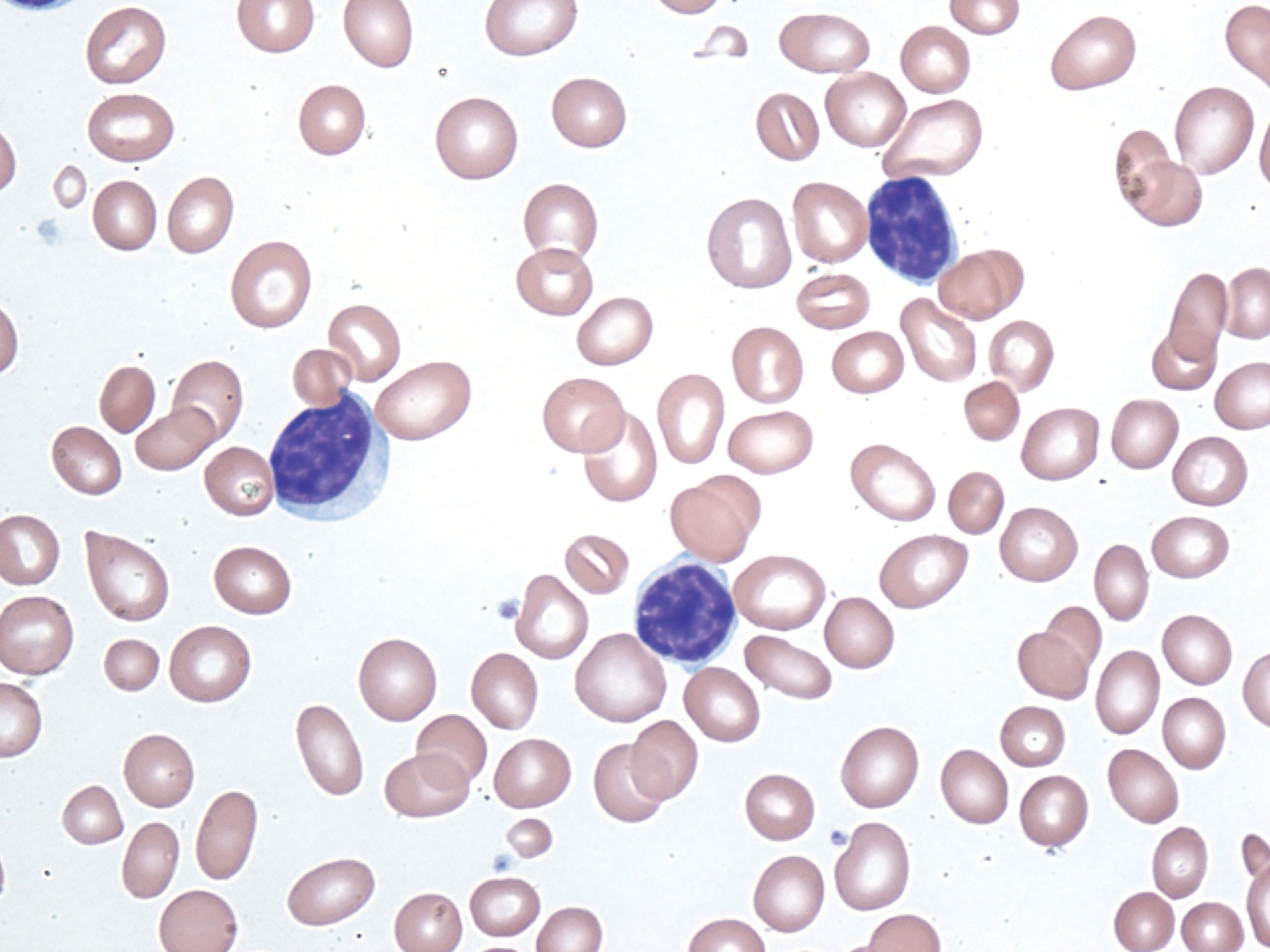Management and Prevention of AEs Associated With Ponatinib Improved
For patients with acute lymphoblastic leukemia and chronic myeloid leukemia, the important identified risks of ponatinib have fallen.

At the 2024 American Society of Hematology Annual Meeting & Exposition (ASH), results presented in a poster from a retrospective study showed that, for patients with acute lymphoblastic leukemia (ALL) and chronic myeloid leukemia (CML) treated with ponatinib (Iclusig), there has been a significant improvement in the management and prevention of important identified risks (IIRs).
By the end of a 10-year period of commercialization of ponatinib, the total reporting rate of all IIRs was 0.219 in the year ending December 13, 2022, compared with 2.369 in the year ending December 13, 2013, with similar decreases in adverse events (AEs) of concern such as arterial occlusive events (AOEs) and venous thromboembolic events (VTEs).
“The study presented today evaluated the impact of these postapproval risk management measures on the safety profile of ponatinib by analyzing real-world safety data collected globally over the 10-year period following its commercialization,” said Elias Jabbour, MD, of The University of Texas MD Anderson Cancer Center, during his presentation of the data.
Ponatinib, an oral third-generation BCR::ABL1 tyrosine kinase inhibitor (TKI), was approved to treat CML and Philadelphia chromosome–positive ALL based on the pivotal phase 2 PACE trial (NCT01207440). Concerns over vascular occlusive events (VOEs) led to risk management measures being added following approval.
Postapproval Risk Management Measures
In 2013, product information for ponatinib was updated to include a warning for AOE and VTE risk and recommended dose reduction for patients who had a major cytogenetic response. A Dear Health Care Provider letter was distributed in the United States and Europe and a Risk Evaluation and Mitigation Strategy (REMS) was initiated in the United States. A follow-up questionnaire meant to obtain structured and key information on VOEs was launched in December 2014.
In 2015, the phase 2 OPTIC trial (NCT02467270; EUDRA CT 2014-001617-12) was initiated; this was a dose-optimization study with a goal of characterizing the efficacy of ponatinib at 3 different dose levels in patients with chronic-phase CML who were resistant to prior TKI or had a T315I mutation. It also looked at the rates of AOEs, VTEs, and other serious AEs. A retrospective analysis of the PACE trial for safety was also reported in 2022.
Determining Postmarketing Rates of IIRs
To investigate IIRs with ponatinib, investigators performed a search of Incyte’s Global Safety Database between December 14, 2012, and December 13, 2024. The IIRs were VOEs, myelosuppression, skin reactions, infections, hypertension, pancreatitis, cardiac failure/left ventricular dysfunction, edema/fluid retention, hepatotoxicity, and hemorrhage. A Medical Dictionary for Regulatory Activities search strategy was used to look for spontaneous reports by healthcare providers and patients, noninterventional study reports, and non-study literature reports. The reporting rates were determined by the ratio between the total number of AEs reported and the estimated postmarketing exposure during this period.
The most frequently reported AEs in the first 12 months of ponatinib’s commercialization were myelosuppression, skin reactions, infections, and AOEs, which occurred at rates of 0.505, 0.362, 0.330, and 0.291, respectively. These rates decreased over the first 2 years, which the investigators attributed to the postmarketing measures, and after 10 years, the rates were significantly decreased for each, at 0.043, 0.030, 0.045, and 0.038, respectively. The other IIRs also saw smaller decreases in reporting over the 10-year period.
Overall, investigators found that the reporting rate of each IIR across the entire 10-year period was much lower than in the first few months and was similar to the rate across the last 1-year period of December 14, 2021, to December 13, 2022. In the last year, the total IIR rate was 0.219 whereas over the 10-year period, the total IIR rate was 0.305. For AOEs and VTEs, the rates in the last year were 0.038 and 0.003, compared with 0.049 and 0.005, respectively, across all 10 years.
Impacts of Risk Management Measures
The investigators discussed how the efforts to improve awareness and management of IIRs were implemented. The brochure and questionnaire sent to healthcare providers in Europe was discontinued in 2019, and in 2018 the United States FDA determined that the REMS program was no longer needed. Eight of the 10 IIRs were removed from the European risk management plan after being adequately characterized and provided with management measures, and as of March 2022, ponatinib is no longer subject to additional monitoring.
The OPTIC trial outcomes led to a strategy of dose reduction from 45 mg to 15 mg in patients who reached BCR::ABL1 of 1% or lower, which was added to prescribing information in 2020. The retrospective analysis of the PACE trial found that there had been a prior overestimation of AOE risk and the risk of adjudicated AOEs was higher in patients with multiple baseline cardiovascular risk factors.
Investigators acknowledged limitations such as the Weber effect leading to reporting bias toward increased reporting of AEs during the initial period after approval, and the use of estimated patient exposure.
“Despite the potential limitations of this analysis such as underreporting of AEs and the use of estimated patient exposure, our results show that the introduction of measures designed to minimize the risk related to ponatinib use was associated with improved safety among patients receiving ponatinib,” concluded Jabbour.
Reference
Jabbour E, Rea D, Bardey-Kanaan M, et al. Ponatinib safety profile: an analysis of 10 years of real-world experience. Blood. 2024;144(suppl 1):3816. doi:10.1182/blood-2024-200256
Gedatolisib Combo With/Without Palbociclib May Be New SOC in PIK3CA Wild-Type Breast Cancer
December 21st 2025“VIKTORIA-1 is the first study to demonstrate a statistically significant and clinically meaningful improvement in PFS with PAM inhibition in patients with PIK3CA wild-type disease, all of whom received prior CDK4/6 inhibition,” said Barbara Pistilli, MD.